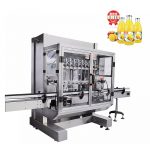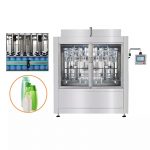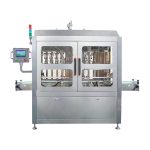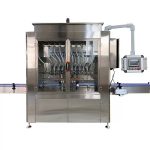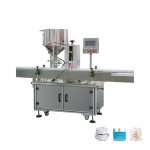What is a Piston Filling Machine?
A piston filling machine is a type of liquid filling machine that uses a piston to dispense precise amounts of a product into containers. It is a commonly used piece of equipment in the food, beverage, personal care, and pharmaceutical industries, and it is known for its accuracy and versatility in handling a wide range of viscosities and fill volumes.
In a piston filling machine, the piston moves back and forth within a cylinder, drawing product into the cylinder on the intake stroke and pushing it out on the discharge stroke. The size of the cylinder or the length of the stroke can be adjusted to control the amount of product dispensed. The piston is typically driven by a motor or other mechanical means, and the filling process is typically automated and controlled by a computer or other electronic controller.

Piston filling machines can be designed to handle a wide range of products, including thin liquids such as water or juices, as well as thicker products like sauces, dressings, syrups, and creams. They can be used to fill a variety of container types, including bottles, jars, tubes, and pouches, and they can be customized to accommodate different closure types, such as screw caps, snap-on caps, and flip-top caps.
One of the key advantages of piston filling machines is their accuracy. They are capable of filling precise volumes of product with a high degree of consistency, making them ideal for use in industries where exact fill volumes are critical, such as the pharmaceutical industry. They can also be programmed to dispense a specific volume of product with each stroke of the piston, allowing for precise control over the filling process.

Another advantage of piston filling machines is their versatility. They can be used to fill a wide range of products with different viscosities, and the size of the cylinder or the length of the stroke can be adjusted to accommodate different fill volumes. This makes them suitable for use in a variety of applications and industries, as they can be customized to meet the specific needs of the product being filled.
Piston filling machines are also typically easy to operate and maintain. They are often designed with user-friendly controls and display screens that make it easy for operators to set up and run the machine, and they are typically equipped with alarms and other safety features to protect operators and the product being filled. They can also be designed with seals and other features that minimize the risk of contamination, making them suitable for use in clean room environments.

In terms of speed, piston filling machines are typically able to fill containers at high rates of speed, making them well-suited for use in high-speed production environments. However, the speed at which a piston filling machine can operate is dependent on a number of factors, including the size of the cylinder, the length of the stroke, the viscosity of the product being filled, and the type of container being used.
There are a few different types of piston filling machines, including single-piston filling machines and multiple-piston filling machines. Single-piston filling machines are typically used for filling smaller volumes of product, while multiple-piston filling machines are designed for filling larger volumes. There are also semi-automatic and fully automatic piston filling machines, with the latter being more suitable for high-volume production environments.

In conclusion, a piston filling machine is a versatile and accurate piece of equipment that is widely used in the food, beverage, personal care, and pharmaceutical industries for filling a variety of products into different types of containers. It is known for its accuracy, versatility, ease of use, and ability to operate at high speeds, making it an attractive choice for a range of applications.
How to choose the right piston filling machine?
There are several factors to consider when choosing a piston filling machine, including the type of product being filled, the viscosity of the product, the volume of the product being filled, the type of container being used, and the speed of the filling process.
One important factor to consider is the type of product being filled. Different products have different viscosities, and it is important to choose a piston filling machine that is capable of handling the specific viscosity of the product being filled. Thicker products like sauces and creams may require a larger cylinder or a longer stroke to ensure that they are dispensed accurately and consistently.
Another important factor to consider is the volume of the product being filled. Piston filling machines are available in a range of sizes, and it is important to choose a machine that is capable of filling the specific volume of product required. Single-piston filling machines are typically used for filling smaller volumes of product, while multiple-piston filling machines are better suited for filling larger volumes.
The type of container being used is also an important factor to consider when choosing a piston filling machine. Different container types, such as bottles, jars, tubes, and pouches, may require different filling equipment and techniques, and it is important to choose a machine that is compatible with the specific container being used.
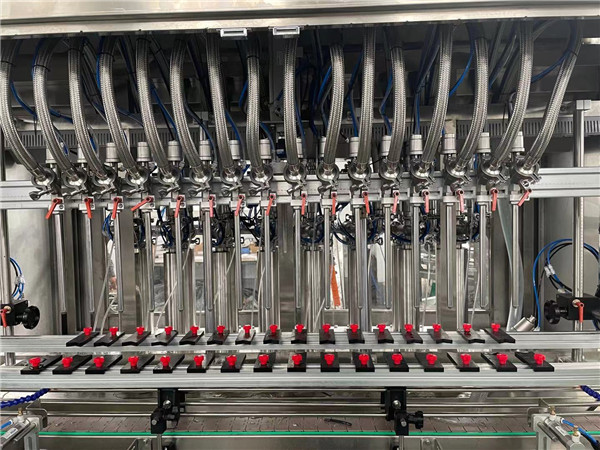
The speed of the filling process is also an important factor to consider, particularly for high-volume production environments. Faster filling speeds can help to increase productivity and reduce costs, but it is important to balance speed with accuracy and consistency to ensure that the product is being filled accurately and consistently.
In addition to these factors, it is also important to consider the overall design and functionality of the piston filling machine. Some machines may be more user-friendly and easier to operate and maintain than others, and it is important to choose a machine that is well-suited to the specific needs and requirements of the application.
Overall, choosing the right piston filling machine requires a thorough understanding of the specific needs and requirements of the application, as well as an understanding of the various factors that can impact the filling process. By considering these factors and carefully evaluating the different options available, it is possible to select a machine that is well-suited to the specific needs of the application and that will provide reliable, accurate, and consistent filling performance.



